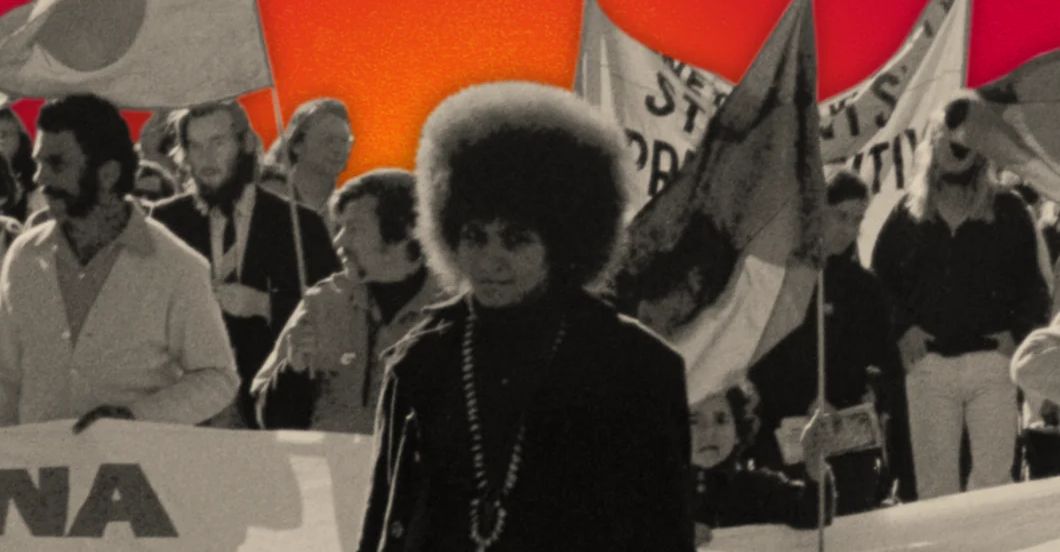In 1972, Charles ‘Chicka’ Dixon, a wharf labourer and Indigenous rights campaigner, headed a delegation of nine First Nations activists to the People’s Republic of China. The visitors were amazed at what they saw — a country seemingly free of racism, where Indigenous people were “equal” and where the communal organisation of the economy seemed to reflect Aboriginal and Torres Strait Islander traditional practices.
This highly charged encounter, facilitated by Australia’s small, secretive Beijing-line Communist party, was but one between Indigenous peoples and working-class radicalism over the twentieth century.
In Indigenous Liberation & Socialism, historian and activist Jordan Humphreys probes the Australian far left’s evolving attitude towards Indigenous peoples, locating a tradition of working-class solidarity dating back to the 1890s. Humphreys is not blind, however, to the fact that this tradition was a minority perspective, or that solidarity was often clouded by paternalism and assimilatory thinking. Yet, his often-exemplary historical work sometimes takes a backseat to questions of an ideological nature.
Marxism and First Nations resurgence
Humphrey’s work emerges out of the context of a resurgence of First Nations activism across the world, and in Australia, reflected in bumper crowds at Invasion Day rallies, huge Black Lives Matter protests across the country in 2020, and the protracted campaign for a constitutionally-enshrined Aboriginal and Torres Strait Islander Voice to Parliament. This has meant the coming to political consciousness of hundreds of thousands of (overwhelmingly young) Australians.
This is not a book designed to convince the undecided on the righteousness of First Nations causes. It is an attempt by Humphreys and the party to which he belongs, Trotskyist formation Socialist Alternative, to articulate a Marxist theory of Indigenous oppression and liberation in opposition to the perceived errors of Settler Colonial theory. These ideas — popular in activist and academic circles alike — are a non-answer to the problems of Indigenous peoples in Australia, Humphreys argues, fostering a reactionary cross-class movement, and unhelpful comparisons with “real” settler colonial conflicts, such as in Palestine.
Humphreys concludes that only a movement of the entire working class can end the exploitation of Indigenous people, and the capitalist mode of production that drives it. This is, of course, true. However, Indigenous Liberation & Socialism’s often-mechanical deployment of theories of class and race, and a remarkable lack of engagement with the very notion of race, are themselves a barrier to the formation of such a movement.
Colonised or capitalist?
The land mass now known as Australia became integrated into an emerging capitalist global market almost as soon as the British invasion began. The link between colonial oppression and the emergence of capitalism is a core Marxist tenet. In Britain, the Enclosure acts forced people off collectively-farmed land into the emerging industrial economy, while colonists in the Americas, Africa and the Pacific seized productive land, displacing and often killing its original owners.
Humphreys insists, however, that this moment of “primitive accumulation” was truncated in the Australian context. Resistance was quickly quashed, emerging capitalists laid claim to huge tracts of productive land, and Indigenous survivors were either forced into the labour market or onto missions. This “settler colonial period” was brief: the capitalist mode of production predominated in the area around Sydney by the 1820s, while elsewhere the “initial process of colonisation was completed a long time ago.” Importantly for Humphreys’ argument, this means that from early on, wage labourers in Australia were not “settlers”, but workers.
This might seem like hair-splitting — whether colonial or capitalist, the emerging Australian state and ruling class still committed genocide on these lands. Yet, such distinctions become all-important in Humphreys’ pivotal third chapter, on the “pitfalls” of settler colonial theory.
Popularised in Australia in the 1990s by scholars like Patrick Wolfe, “settler colonialism” is a distinctive type of colonial domination. Famously, Wolfe insisted not only that the invasion of First Nations lands in the Americas and Oceania is “a structure not an event” — creating states legitimated by the denial of Indigenous sovereignty — but that such structures are fundamentally eliminationist.
Settlers or workers?
Wolfe’s work has come in for important criticism, including by First Nations scholars. But the critique made by Humphreys is not convincing. He insists that the work of extermination and land theft was led by the state, under the auspices of a small elite. Workers were at worst pawns in their masters’ game, and indeed were frequently on the receiving end of ruling class violence themselves. So far, so true. But Humphreys goes on to argue that workers — then and now — have no stake in the colonial enterprise:
The working class, who make up most of the population, do not benefit from mining bosses being able to exploit Indigenous land, or from Black deaths in custody or from the crippling poverty and inequality that Indigenous people suffer.
This is, however, problematic. Humphreys acknowledges that it “could be argued” that “without the dispossession of Indigenous people, the whole economy and society in which [white workers] live wouldn’t exist.” That settler-workers and elites compete to divvy up the spoils of colonial oppression, as argued by Sai Englert in particular, is quickly dismissed. White and black workers are both oppressed, after all, and it “is not in the material interests of the non-indigenous working class that this society continues as it currently exists.”
Where do the very real material differences between settler and First Nations workers — which he acknowledges — come from? For Humphreys, this is a product of “the racism directed towards” them. But, what is racism? This is not a question Humphreys entertains to any great extent. It cannot be a material relation because, as we have already seen, white workers supposedly do not benefit from it.
Racism, as it pops up throughout the book, plays no materially-structuring role in Australian capitalism. It is simply a set of bad ideas foisted on the workers. Why, then, are these ideas accepted, indeed often embraced, by non-Indigenous workers against their own interests? Why, as Humphreys chronicles, did a large, violent crowd mobilise outside a house where two Indigenous kids blamed for local property crimes were taking refuge in the Queensland town of Rockhampton in 2023, chanting racist slogans? This exact question is the subject of decades of work in the Marxist tradition by Noel Ignatiev, David Roedinger, Alana Lentin and many others. But, Humphreys’ insistence on smoothing over real divisions in the working class, to apportion all blame for racism to bosses and their ideologues who merely corrupt the minds of workers, makes it very difficult to understand where anti-racist struggle comes from.
“Thank Christ for the commos”
Indigenous Liberation & Socialism is at its best in the middle chapters, where Humphreys historical knowledge is on display. Indigenous workers had always been a part of the work force, in certain places its primary component. Humphreys finds that this was reflected in debates during the 1890s, for instance, when a motion was put to a meeting of the Amalgamated Shearers Union to accept Aboriginal workers to honourary life membership of the union. One delegate applauded the move as “a grateful act to those from whom the country has been taken.”
The Communist Party of Australia turned such sporadic sentiment into a national agenda. The CPA was “ahead of the curve” in its early adoption of a program on Indigenous rights in 1931, declaring Indigenous people to be “the slaves of slaves” — doubly oppressed by their status as workers and First Peoples. The party went on to oppose frontier massacres, lead post-war campaigns for equality and inclusion, and — by the 1970s — engage with the politics of Black Power. Its Stalinist politics notwithstanding, Humphreys shows how Party activists played instrumental roles in key campaigns throughout this period. It isn’t or nothing that First Nations activist Kevin Gilbert declared, “thank Christ for the Commos”.
Humphreys employs this potted history as a counter-weight to Sai Englert’s insistence on “the conspicuous absence of involvement by settler working classes … in mass, sustained challenges against the process of settlement and indigenous dispossession.” Yet, if anything, Humphreys’ narrative actually speaks strongly to Englert’s argument: these were rarely more than “individuals or limited campaigns.”
Their limited nature does not make such campaigns and struggles unimportant. In fact, they need to be closely studied, to identify the conditions under which non-Indigenous workers break with the set of relations within which they are implicated. Padraic Gibson has analysed several such campaigns of the 1930s, including the successful work of Communist Party members in the northern port city of Darwin to stop a planned massacre of Indigenous people at Caledon Bay in 1934. For Gibson, it was “Indigenous struggles driven by commitment to collective social relations and relationships to land on the periphery of the system [that] provided inspiration for workers being exploited at its core.”
It was “exposure to these struggles” that broke the Party out of conservative ways of thinking, forcing members to trouble their theories and preconception. Priyamvada Gopal calls this process “reverse tutelage”, and it is apparent in all the key campaigns Humphreys touches on: the Caledon Bay campaign, the Pilbara and Gurindji strikes, and the party’s embrace in the 1970s and 1980s of what he labels “identity politics”. It required, however, an openness to new ideas.
Towards liberation
For Humphreys, the paradigmatic case of settler colonialism is Palestine. He is right that Australia and Palestine are worlds apart in many respects: Israel controls millions of Palestinians under military rule, theft of land is ongoing — indeed accelerating — to this day, and Palestinians continue to wage an anti-colonial armed struggle. But, using an absence of these factors in Australia — a contestable claim on many grounds — to dismiss the settler-colonial analogy ends up imposing blind spots on his narrative.
One is an inability to properly conceptualise the reality of Indigenous life. If Australia is not a settler-colony, then why is Indigenous politics such a point of tension in the wider community, and land such a prominent feature of Australian right-wing discourse? If First Nations people’s small number when compared to the larger population makes them “marginal”, then why did the capitalist class fall in line behind the Voice to Parliament referendum, or attempt to construct the “Black bourgeoisie” that Humphreys sees as emerging? Elimination can take many forms, including absorption.
Another blind spot, paradoxically, is that it is quite difficult to explain why the movement developed as it did. External stimuli — the Communist International, the American Civil Rights Movement — are given vital roles here, but only rarely are the roles of Indigenous activists themselves profiled, or the significance of their “tutelage” on white progressives noted. What circumstances enable a settler worker to break with their, however meagre, role in the colonial hierarchy? And how — or can — such experiences be generalised? These are questions of vital importance today.
Image: a detail of the cover of the book



